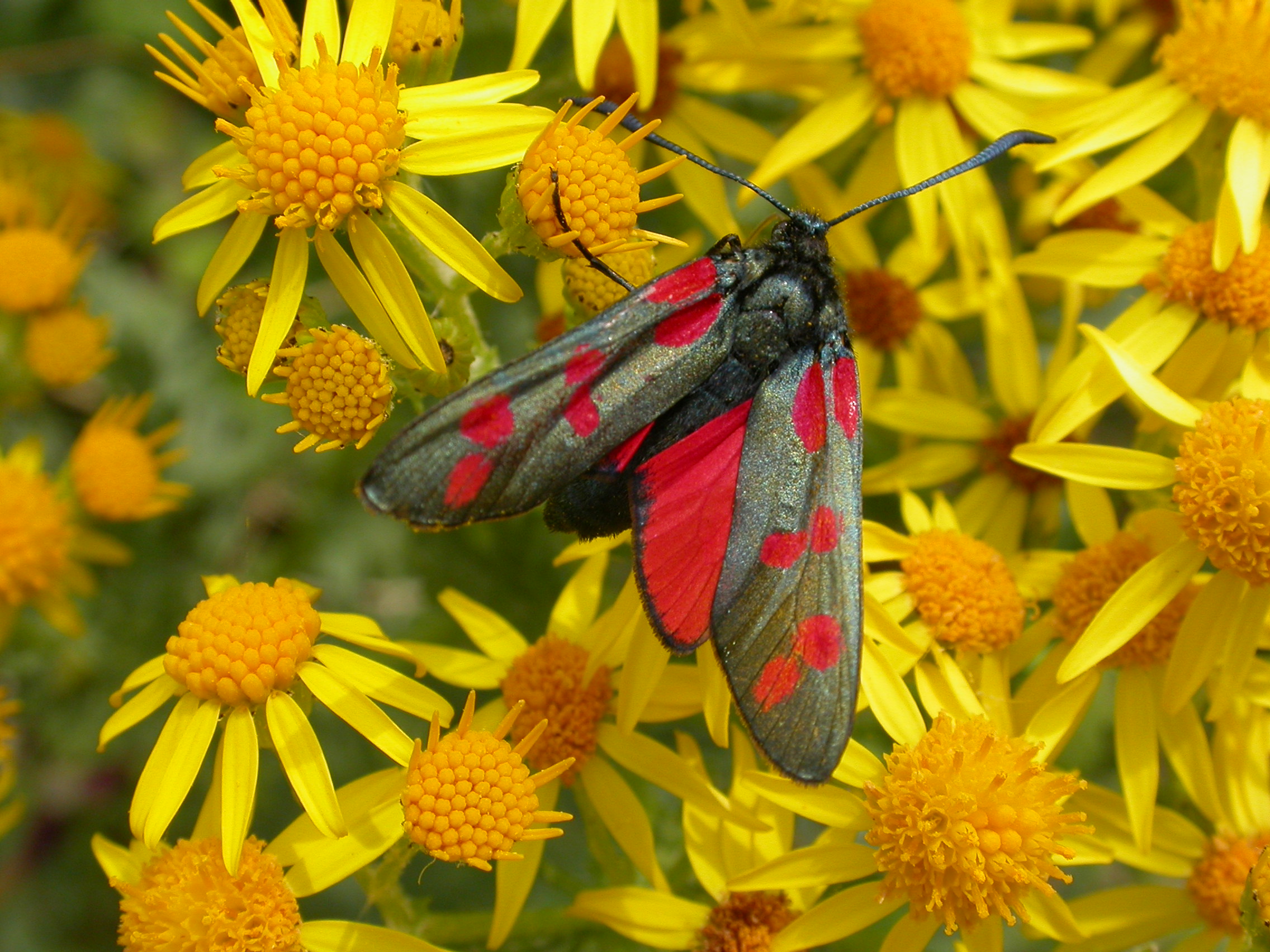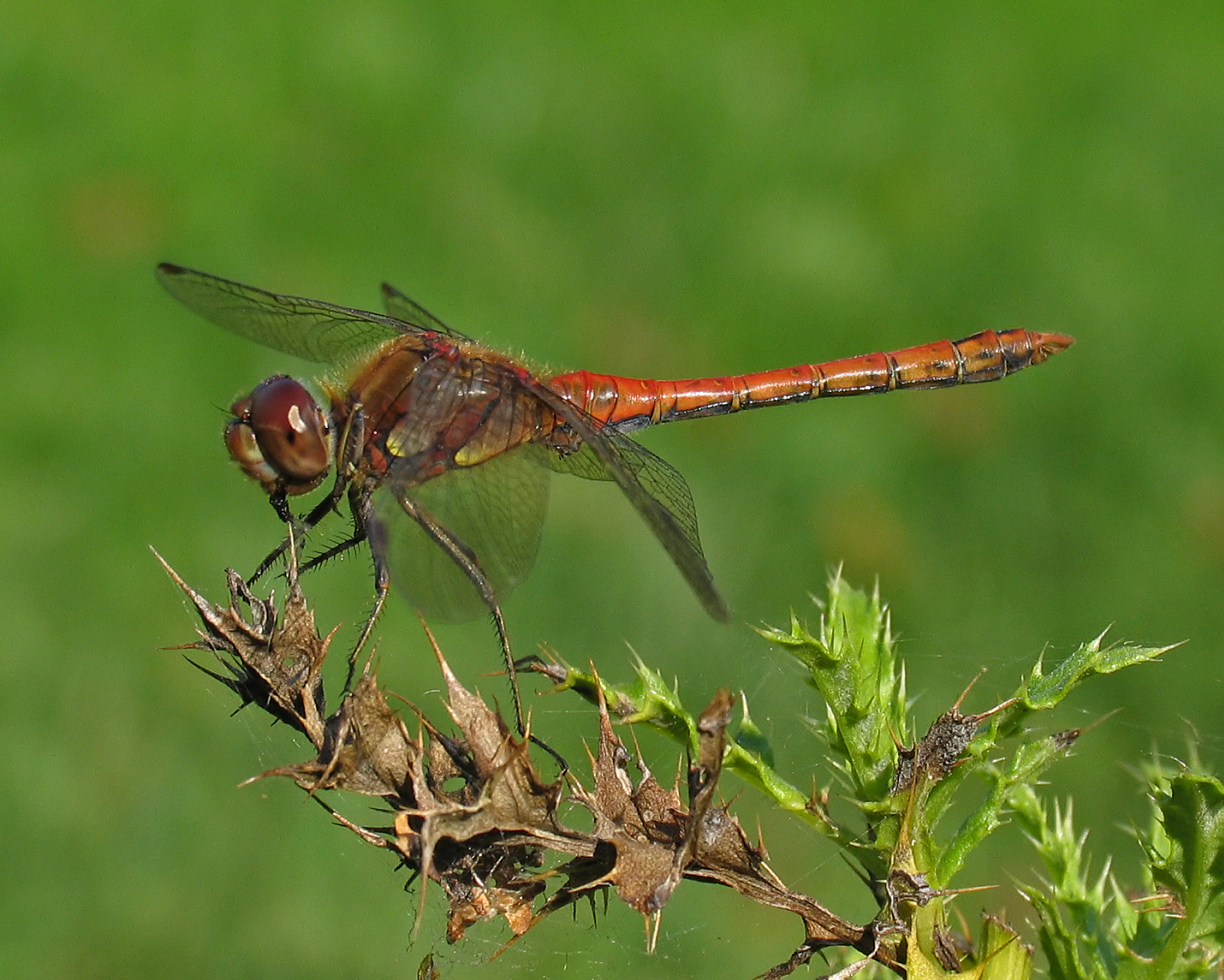Sickleholme Nature Notes
Although the hot weather lasted until almost the end of July, there were plenty of wildlife sightings during the month. On the 3rd, a family party of five Stoats entertained some of those playing in the EGGs Charity Day and a few days later two Brown Hares were seen; the latter a seemingly scarce species locally nowadays.
I continued to monitor the practice ground pond on a regular basis and my search for dragonflies finally paid off, when I found a small colony of Common Darter (the image shows the male). Around the water’s edge, I added Rosebay Willowherb, Knapweed and Clustered Dock to the wildflower species mentioned last month whilst also managing to sort out Water Snails, Water Boatmen, 7-Spot Ladybirds and several species of grass moth. In the heat of the day, the whole had the look of a very colourful oasis.
Elsewhere on the course, more seasonal wildflowers appeared with some rich patches of purple Betony off the 9th fairway and the first Harebells of the year. The latter are a personal favourite of mine although the sky-blue colouring of the flower heads may influence that, being more Coventry City than Sheffield Wednesday! Many of the wildflowers found on the course will attract butterflies and there were plenty of Gatekeepers (new for the year list) albeit that the commonest species remained Meadow Brown. One of the more attractive day flying moths was seen in mid-month in the form of a Six-spot Burnet (the image here is one that I took near to home) and I also saw another daytime moth, which is called Yellow Shell.
Most of our bird species had stopped singing by about the 12th, being well into their breeding season, and young birds could be heard calling for food. Those included two young Buzzards, Mistle Thrushes and some particularly noisy Jays. My best count of Swift was 16 over the car park early in the month. This will be the first species to leave us, heading southwards for the winter, and sightings after mid-August are rare. You may recall that earlier in the year, a Woodcock was found on a nest just beyond the 8th fairway. I have now learned from Mike Elsworth that birds “roding” (that is their display flight) just before dusk, was once quite a common sight towards the top of the course. As ever, plenty to see and enjoy.
Bryan Barnacle



